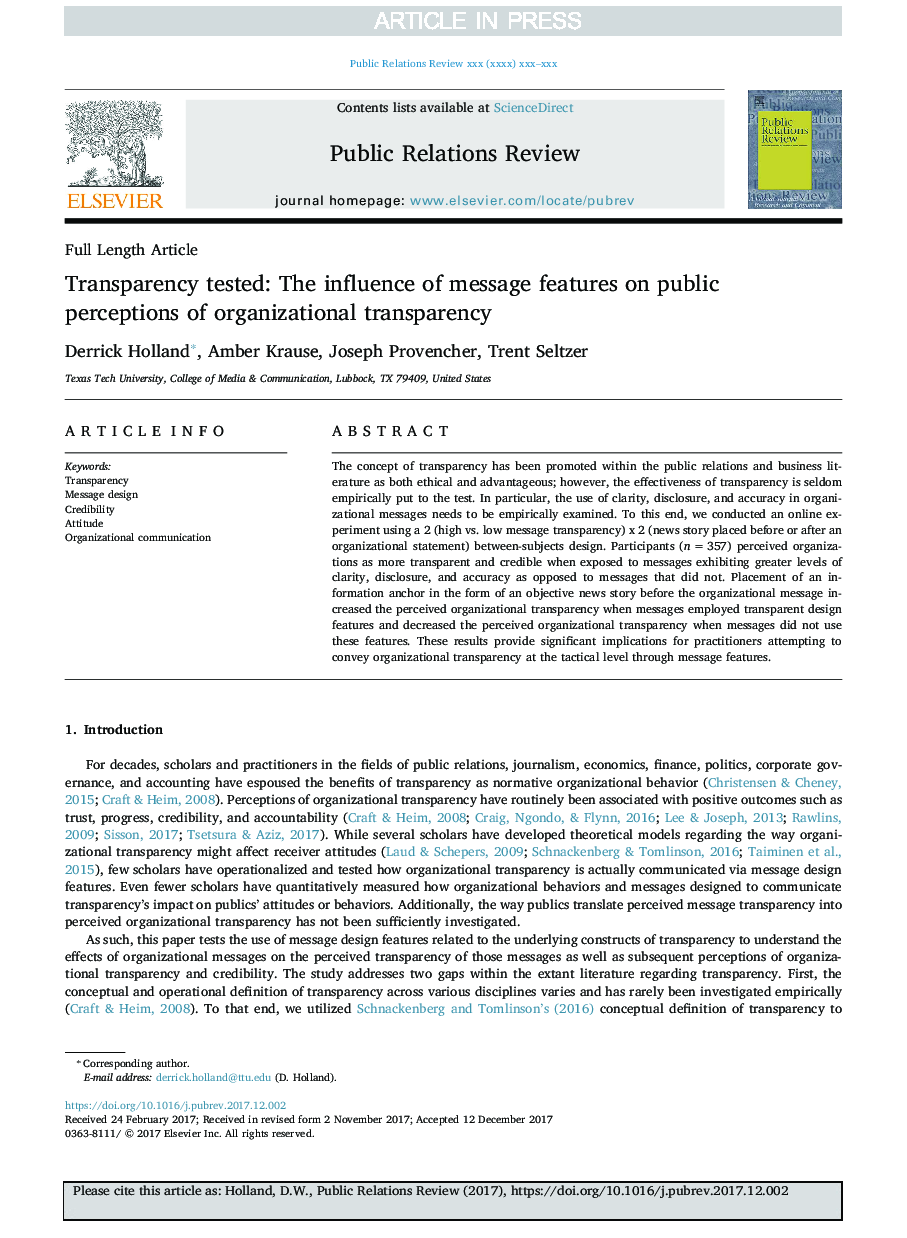| Article ID | Journal | Published Year | Pages | File Type |
|---|---|---|---|---|
| 6575836 | Public Relations Review | 2018 | 9 Pages |
Abstract
The concept of transparency has been promoted within the public relations and business literature as both ethical and advantageous; however, the effectiveness of transparency is seldom empirically put to the test. In particular, the use of clarity, disclosure, and accuracy in organizational messages needs to be empirically examined. To this end, we conducted an online experiment using a 2 (high vs. low message transparency) x 2 (news story placed before or after an organizational statement) between-subjects design. Participants (nâ¯=â¯357) perceived organizations as more transparent and credible when exposed to messages exhibiting greater levels of clarity, disclosure, and accuracy as opposed to messages that did not. Placement of an information anchor in the form of an objective news story before the organizational message increased the perceived organizational transparency when messages employed transparent design features and decreased the perceived organizational transparency when messages did not use these features. These results provide significant implications for practitioners attempting to convey organizational transparency at the tactical level through message features.
Related Topics
Social Sciences and Humanities
Business, Management and Accounting
Marketing
Authors
Derrick Holland, Amber Krause, Joseph Provencher, Trent Seltzer,
